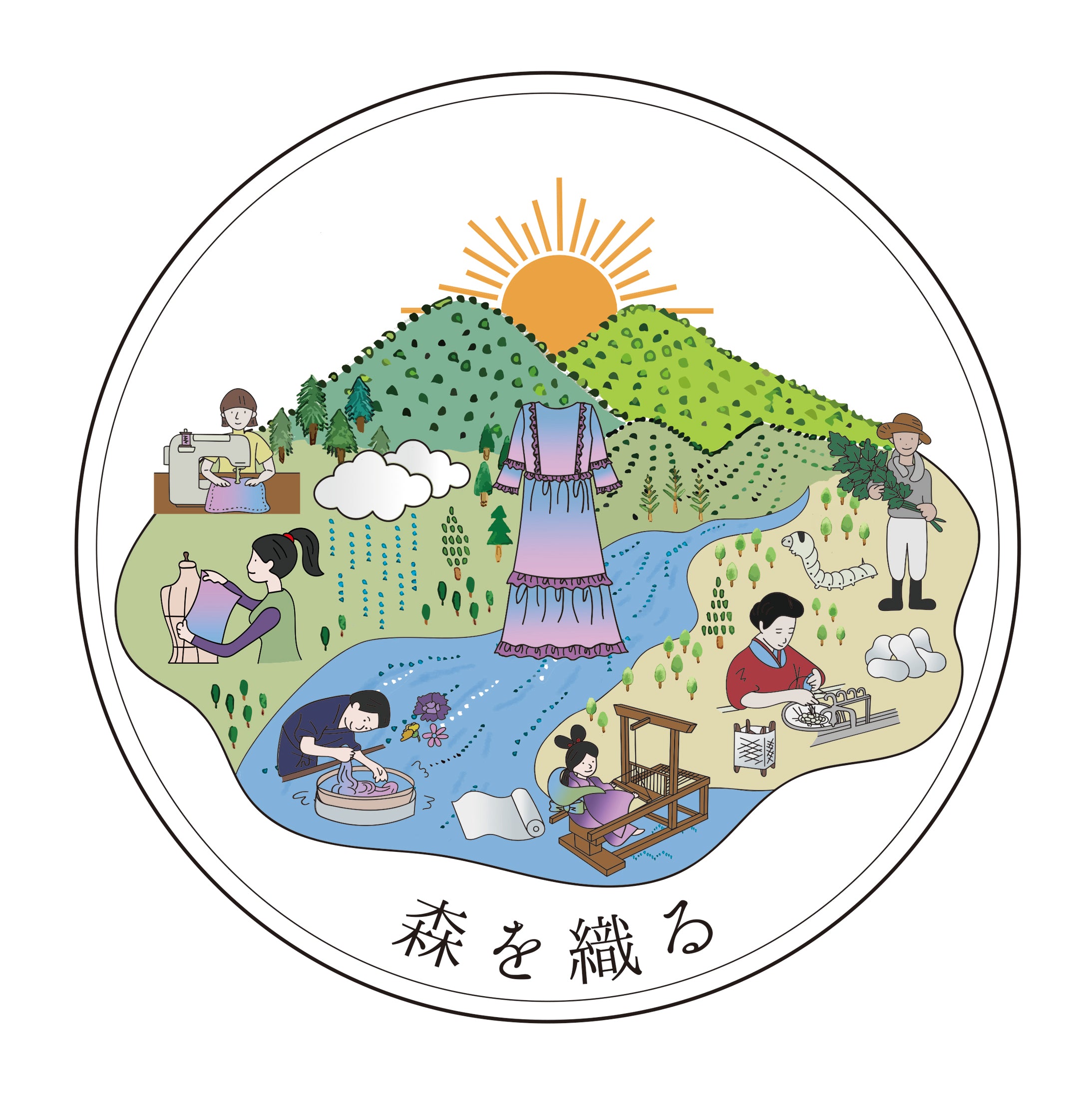
一枚の服づくりからはじまる、生命の連環。
森から植物が育ち、水が川を流れて動物の命が育まれ、
人々がものを作り、そこに生命が宿っていつか朽ち、
また生まれる。
壮大で美しい、終わらぬ生命の連環への祈りを、
一本の糸に込めて織ってゆく。
私たちは、原材料の桑や蚕から草木の染めまで
さまざまな生命を織り込んだ日本の絹織物の服づくりで、
自然と人の生態系を育み、
地球を再生するための共創プロジェクトです。
-----------------------------------------------------------------
Making clothes that link together life.
The forest nurtures flora,
the river flow with water that feed the fauna,
people create things, and eventually the life in those things
fade and is reborn.
Into the threads we pour our prayers
to the vast, beautiful and unending life cycle,
and we weave them together.
MORI WO ORU -"Weaving the Forest" is
a co-creation project to nurture the ecosystem of nature
and people and to regenerate the earth through
the production of Japanese silk clothing,
which is woven with the help of many living things,
from raw materials like mulberry and
silkworms to the natural dyes.
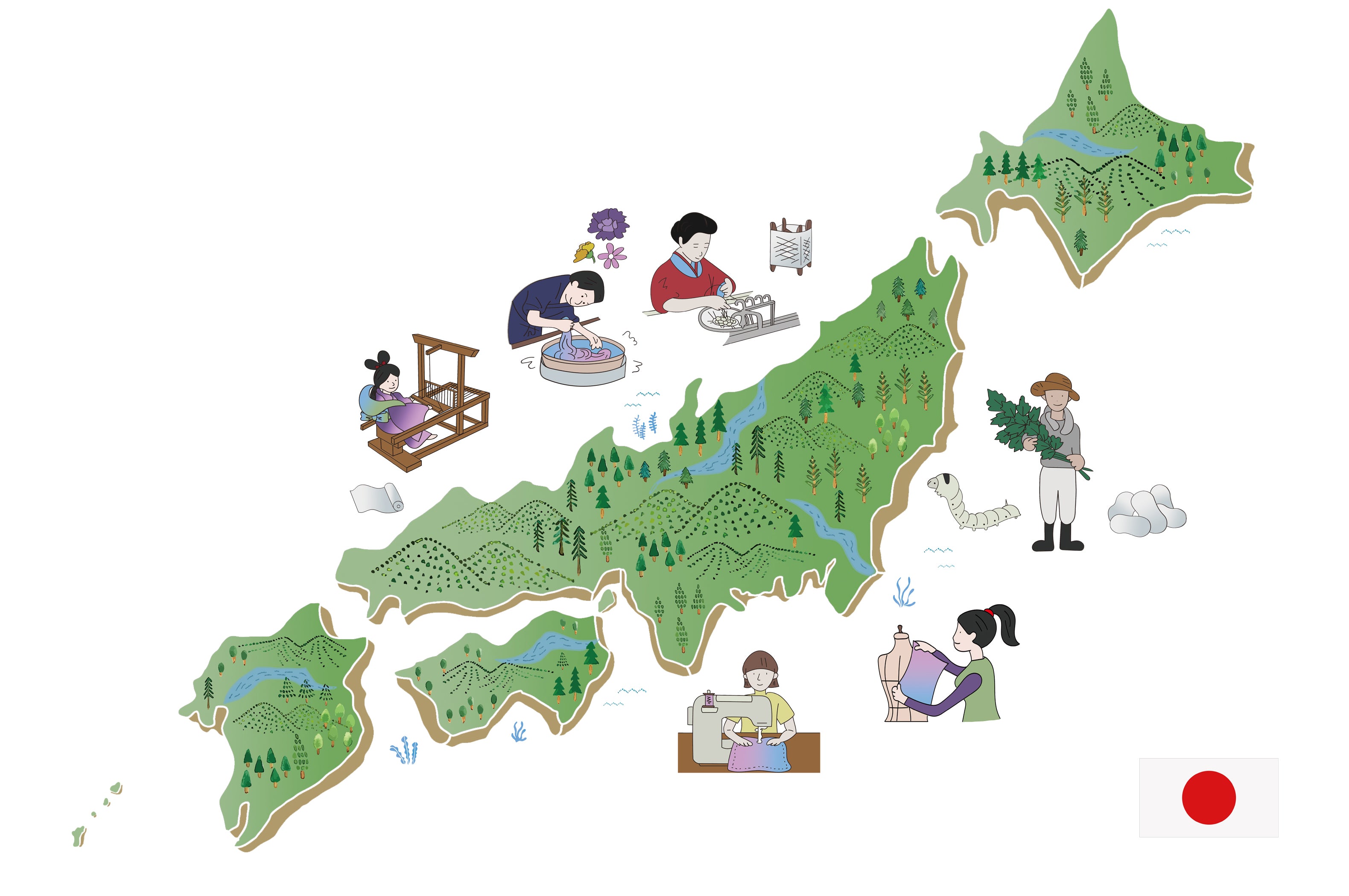
空気、土、水などの自然環境と植物や動物、そして人間も。その自然環境の中で住んでいる生き物たちは、お互いに関わり合って存在しています。
このような自然界の循環を、生態系と言います。
海に囲まれた森の国である日本では、川や海や里山の環境はもちろんのこと、地域の活性化や人の安全で安心な暮らしにとっても、森から海までの健全な生態系のつながりが極めて重要です。
そのつながりの重要な役目を果たすのが自然界と適度に関わり生態系を循環させる、人の里山の工芸文化です。里山の工芸文化は近代化や経済成長により日本でも激減していますが、
それでも人々の努力によりまだわずかに残っています。
MORI WO ORUは、桑を植え蚕を育て繭から糸をとり、古くから里山の工芸文化として日本で息づいてきた絹織物の文化を現代ファッションにアップデートし、デザインとアートを通して自然と人の生態系の連環の回復を育みます。
The natural cycle of air earth and water, plants, animals, and humans. All the creatures living an environment exist together, affecting each other.
This cycle in nature is called an ecosystem. In Japan, a country of forests surrounded by the sea, a healthy ecosystem from the forests to seas is extremely important, not only for biological production in rivers,oceans, and satoyama, but also for local revitalization, and safe and secure living for people.
The satoyama craft culture developed by humans where people steward nature, acts as an interface, connecting parts of the ecosystem together. In the face of modernization and economic growth, even in Japan, this traditional culture is at risk of being lost, but thanks to the efforts of some dedicated people it lives on.
At MORI WO ORU -"Weaving the Forest",
we are updating the silk weaving practices rooted in traditional Japanese culture to modern fashion. This is a regenerative fashion design and art project, where we plant mulberry trees, raise silkworms and make thread from silk, with the aim of restoring the ecosystem cycle through clothing.
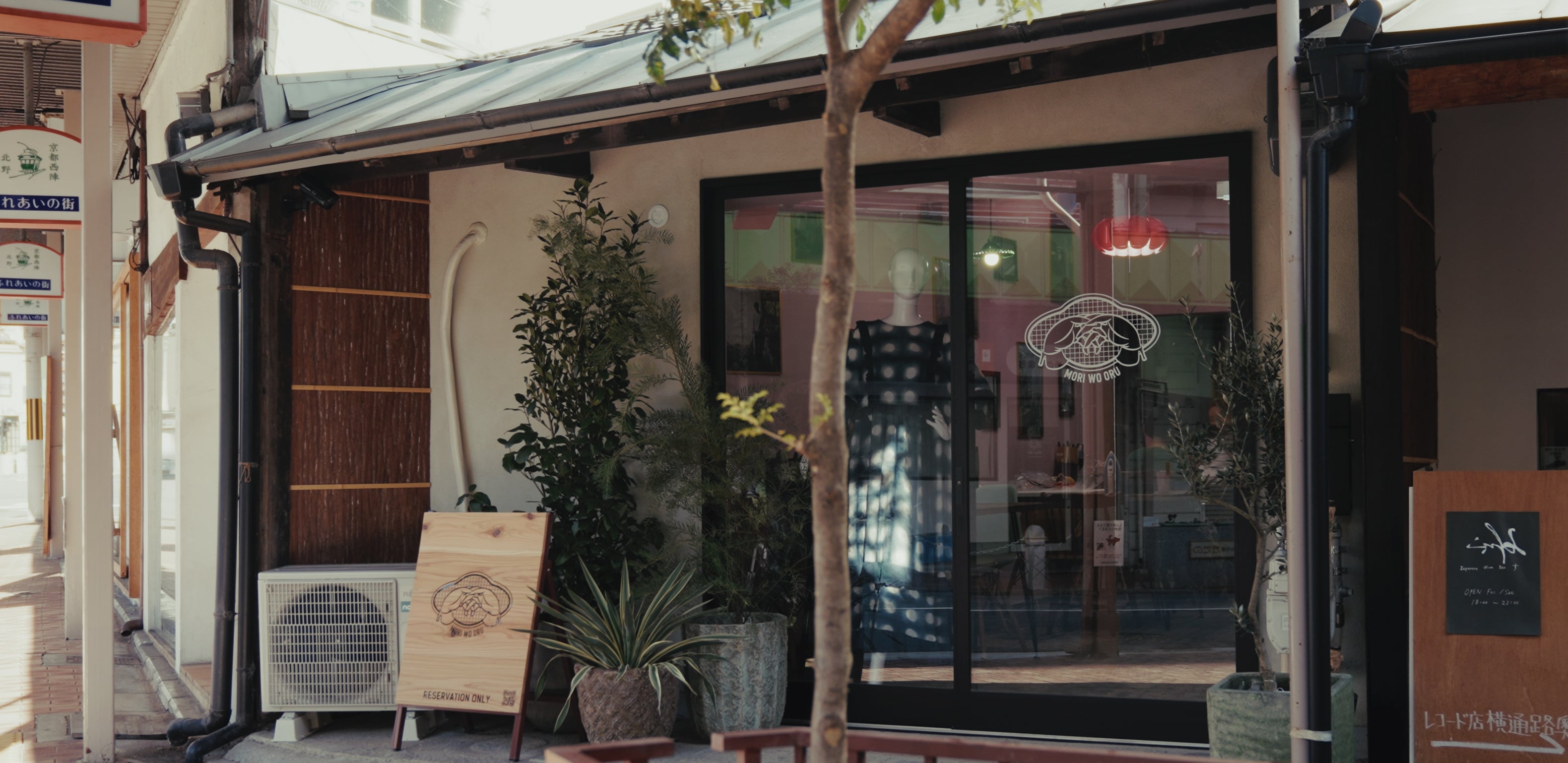
MORI WO ORU Design Studio/SHOP /OFFICE
602-8341 京都府京都市上京区三軒町48-8
48-8 Sangen-cho,Kamigyo-ku,Kyoto-shi,Kyoto,Japan
TEL/ 075-384-8369
CONTACT/ info@moriwooru.jp
OPEN/ (tue)〜(sat)9:00-18:00
CLOSE/ (sun)(mon)
要予約/Reservation Only
主な生産地
Main production area
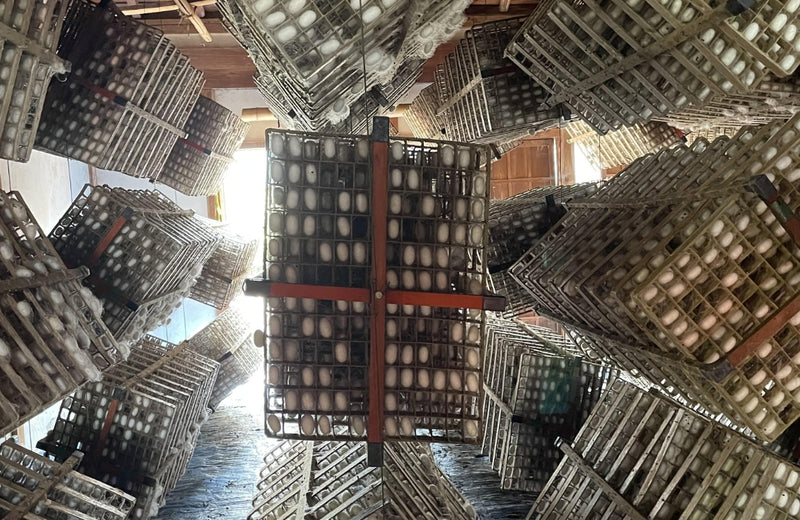
紀元前97~30年に知々夫彦命(ちちぶひこのみこと)が秩父に来任し、養蚕・機織りを教授したと言い伝えられる、養蚕の古い歴史を持つ秩父。武甲山を中心とする山岳地帯で米を生産出来ず、桑を植え養蚕が広まったとされていますが、現在も残っているのは影森養蚕所1件のみ。日本の養蚕農家は減少の一途をたどり(2023年時点で160件ほど)、現在、国産繭を原料とする純日本製絹は約0.02%です。
構造上の課題により養蚕と製糸を国産にすることは非常に難易度が高く、一つの地域(日本)での連環を目指すMORI WO ORUにとって、国産養蚕と製糸の生産を増やしていくことは重要なチャレンジの一つです。
Chichibu city, Saitama Prefecture (Sericulture)
According to legend, around 97~30BC, Chichibu Hikonomikoto came to Chichibu and taught sericulture and weaving.
In the mountainous region centered around Mt. Bukō, rice cultivation was not possible, so mulberry trees were planted and sericulture spread.
In spite of this long history of sericulture, there remains only one sericulturist, in Chichibu today: Kagemori Silkworm Farm. In Japan, the number of silkworm farmers is in a steady decline (about 160 farms in 2023), and currently pure Japanese silk made with cocoons produced in Japan is about 0.02%.
Due to problems arising in manufacture, working exclusively with Japanese sericulture and silk thread is extremely difficult.
At Mori wo Oru, we aim to practice cradle-to-cradle manufacture
within one region (Japan), and so increasing the amount of Japanese sericulture and silk thread production is one of our major challenges.
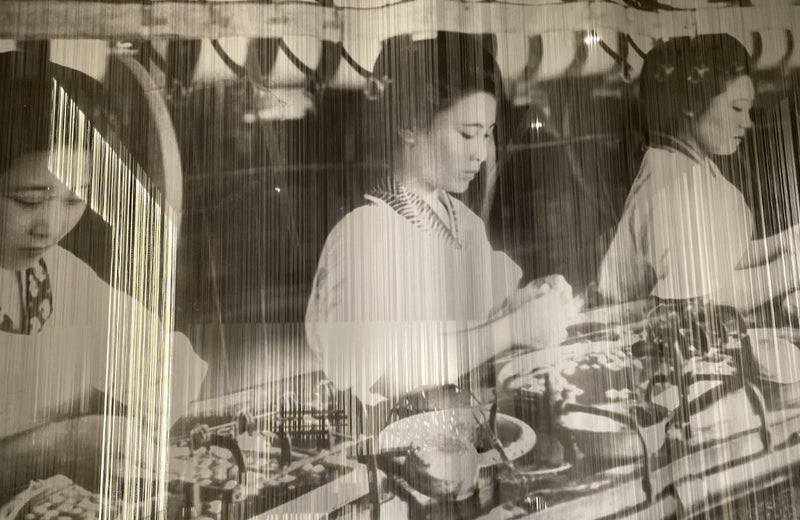
諏訪湖のほとりにあり綺麗な水が潤沢な岡谷市は世界から”SILK OKAYA”と呼ばれるほど有名なシルクの産地で、諏訪式糸繰機という独自の製糸技術も生み出しました。製糸業全盛の昭和初期、国内に製糸工場は3,300軒ありましたが、現在は全国に4軒しか残っていません。
その中でいまも手作業で糸繰りをしているのは岡谷の宮坂製糸所のみとなりました。岡谷で製糸した国産繭50%以上の生糸を使用し、国内で縫製したシルク製品は、「岡谷シルク」のMULBERRY GREENの認証製品となります。
Okaya city, Nagano Prefecture (Thread)
Located on the shores of Lake Suwa and blessed with abundant clean water, Okaya City is a renowned silk production area known worldwide as 'SILK OKAYA'.
They have even developed their own unique thread production technology, the ‘Suwa-style spinning machine.’ In the early Showa period, the heyday of silk thread spinning, there were 3,300 thread manufacturing factories countrywide, but only four remain today. Of those, Miyasaka Silk Reeling in Okaya is the only one where they still reel silk by hand. Silk products reeled in Okaya with domestically produced cocoons are given he Mulberry Green certification, which signifies that the quantity of Japanese cocoons is 50% or more, that all the thread is produced in Okaya and the resulting products are also made in Japan.
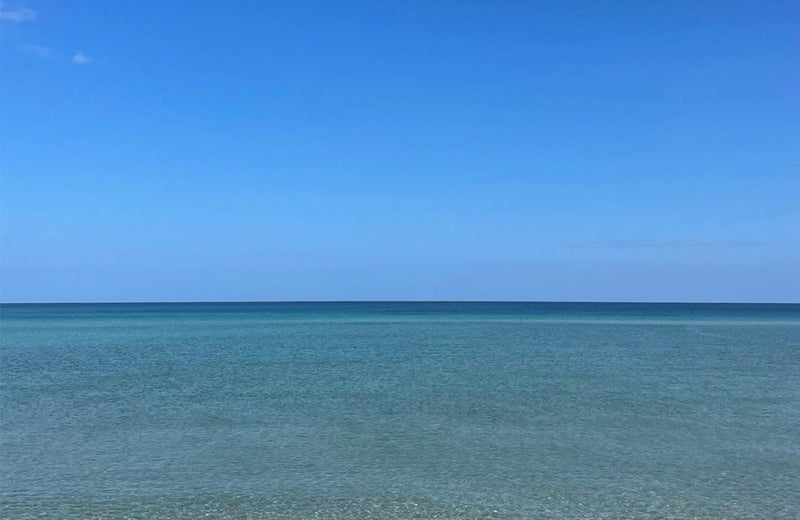
丹後地域は1300年の歴史を持つ日本における絹織物の一大産地です。豊富で良質な水に恵まれ、年間を通じて湿度が高い気候により、乾燥に弱い絹は痛みから守られるという、絹織物に適した環境を持っています。
国内のシェアは70%にも上がり、海外でも高い評価を得ています。丹後地方の軟水によって生み出される、しなやかな風合いとあらゆる試行錯誤によって編み出された技法により、多様な質感を世界へ届けています。
厳しい検査を経た製品にはブランドマークを押印し、高品質な「丹後ちりめん」として保証しています。
Yosano, Tango City, Kyoto Prefecture (Silk textiles)
The Tango region has a 1300-year history as one of the major silk weaving centers in Japan. It is blessed with abundant and high-quality water. The climate is humid all year around, protecting the sensitive silk fabrics from dryness and damage.
Tango accounts for as much as 70% of the domestic market for silk fabrics in Japan, and they are also highly regarded overseas. The soft water in the Tango region produces a supple texture, and the techniques developed through trial and error have brought a wide variety of textures to the world.
Products that have passed strict inspections are stamped with the brand mark that guarantees their high quality as Tango Chirimen.
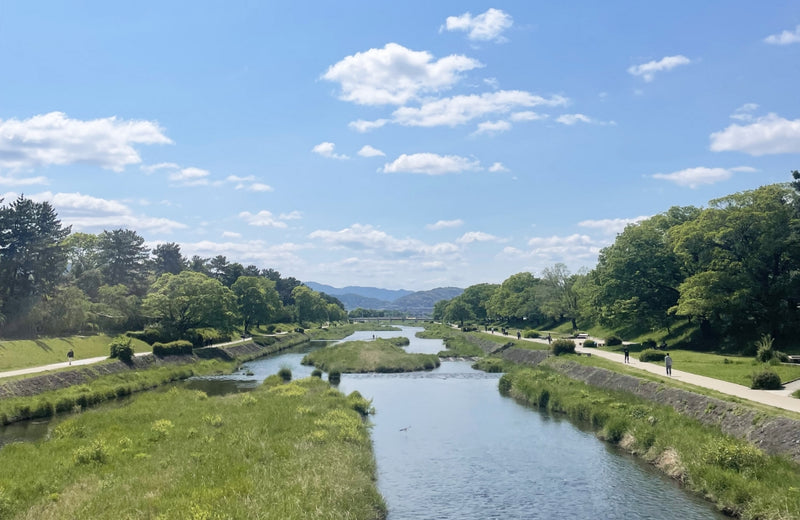
西陣織が有名な京都は、桂川や鴨川など水に恵まれた土地で、染色の文化が盛んです。草木染めは縄文時代から行われていましたが、その後海外から染色の高度な技術が渡来し、日本の染色は急速に発展しました。
平安時代に入ると、日本独特の色彩名が定められ、染色技術も確立したとされます。
平安時代の首都があった京都には、今でも草木染めの技術が沢山残っています。
Kyoto City, Kyoto Prefecture (Kusaki-zome)
Kyoto, known for its famous Nishijin weaving, is a land blessed with water from rivers like the Katsura and Kamo, and has a rich culture of dyeing.
Although Kusaki-zome (natural dyeing using plants, shells and insects) had been practiced since the Jomon period (710-794), advanced dyeing techniques were later introduced from overseas, and Japanese dyeing industry developed rapidly.
In the Heian period (794-1185), the names of colors unique to Japan were defined and dyeing techniques were established.
Many techniques for kusaki-zome still remain in Kyoto, which was the capital of Japan in the Heian period.
シルク
Silk
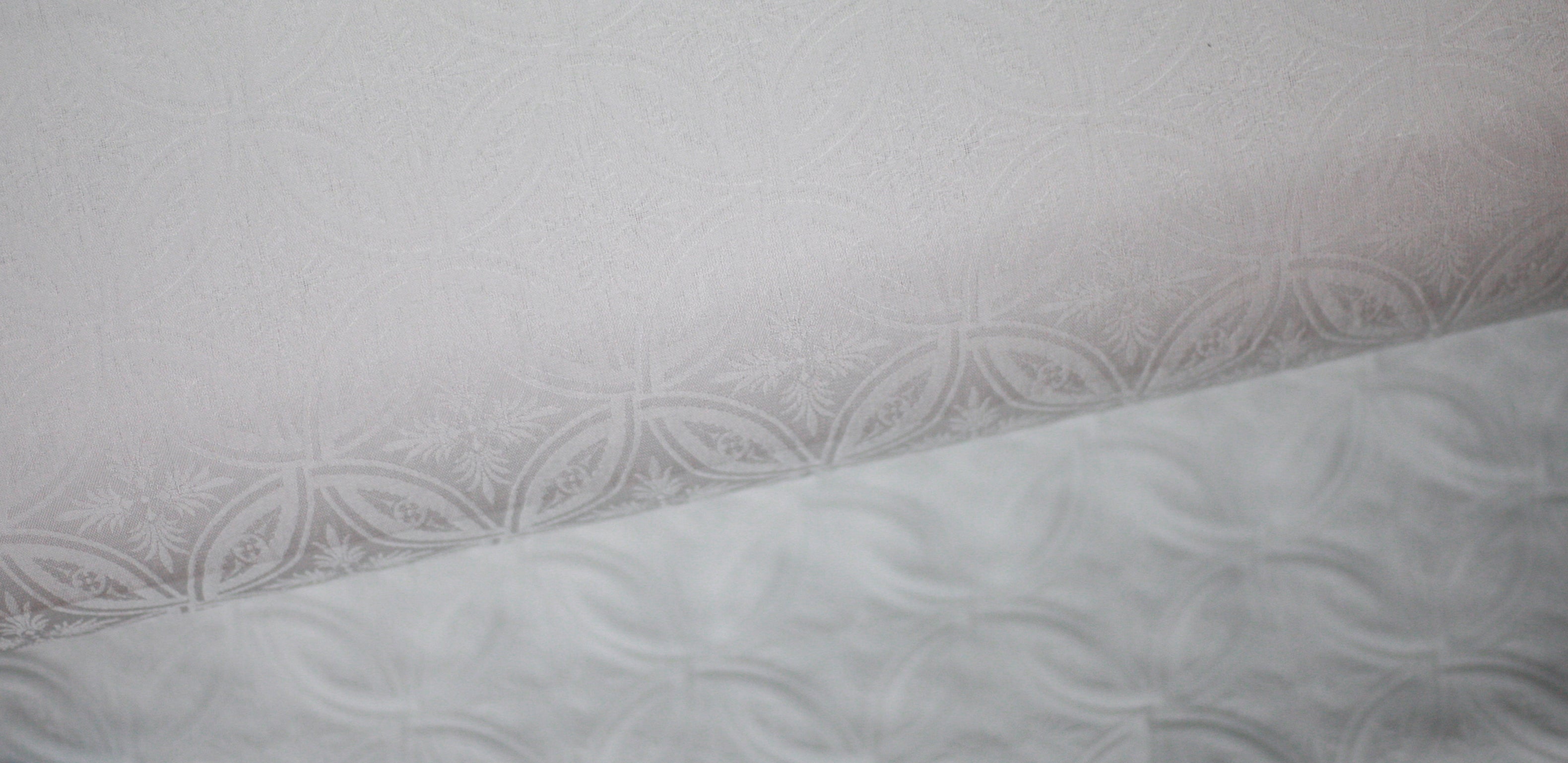
シルクは、蚕(かいこ)の繭から作られるタンパク質の天然繊維です。お肌の成分に近いとされる、アラニンやグリシンなど約20種類ものアミノ酸が結合した天然繊維は皮膚への刺激がとても少ないのが特徴です。軽くて柔らかい、しなやかで心地よい、静電気が起きにくくホコリを寄せ付けないといった、特有の魅力をたくさん持った素材です。
神様からの贈り物とされている高潔な生地で、人間の肌と非常に相性が良いと言われています。細かい穴がたくさんあり、通気性や吸湿性に優れており、夏は汗をしっかり吸って外に出し、冬は保温性が高く冷たい外気を寄せ付けません。冷えとり・温活には最適な生地です。また、紫外線を吸収するので、日焼け対策にもなったり、皮膚をいつも清潔な状態に保ってくれる抗菌性もあります。このようにシルクはさまざまな効能があり、古くから多くの人々に愛されてきた素材です。
シルクの生産が本格的に始まったのは、紀元前6000年頃からだと言われています。養蚕への高い技術を持っていた中国が輸出によって栄え、中近東や西洋への交易ルートは「シルクロード」と呼ばれました。シルクロードを通して、世界中でシルクが愛されました。
シルクの織物は、経糸と緯糸が織りなされて作られますが、それはまるで人と人、人と自然や芸術との出逢いや繋がりを象徴しているようです。生態系の全ての複雑な関わりの中で、一人では不可能な美しく素晴らしい作品が出来上がる事に感銘を受け、私たちはこのプロジェクトに”森を織る”と名付けました。
Silk is a natural protein fiber derived from the cocoons of silkworms. It contains approximately 20 amino acids, such as alanine and glycine, which are similar to components found in human skin, resulting in minimal skin irritation. This lightweight, soft, and supple material possesses unique allure, being resistant to static electricity and repelling dust.
Considered a divine gift, silk is revered for its purity and exceptional compatibility with human skin. Its numerous fine pores contribute to excellent breathability and moisture-wicking properties, allowing it to absorb sweat in summer while retaining warmth and repelling cold air in winter, making it ideal for temperature regulation. Additionally, silk absorbs UV rays, serving as a natural sunblock, and its antibacterial properties help maintain skin cleanliness. With such diverse benefits, silk has been cherished by many throughout history.
The commercial production of silk is believed to have commenced around 6000 BCE, flourishing through Chinese expertise in sericulture and trade along the Silk Road, which facilitated its spread to the Middle East and Europe, garnering global appreciation.
Silk weaving involves the intricate interlacing of warp and weft threads, symbolizing the interconnectedness between individuals, nature, and art. Inspired by the beauty and complexity of ecosystems, we've named our project "Weaving the Forest," "MORI WO ORU" recognizing the remarkable collaborative efforts that yield exquisite creations beyond the capabilities of any single entity.
草木染め
Kusaki-zome
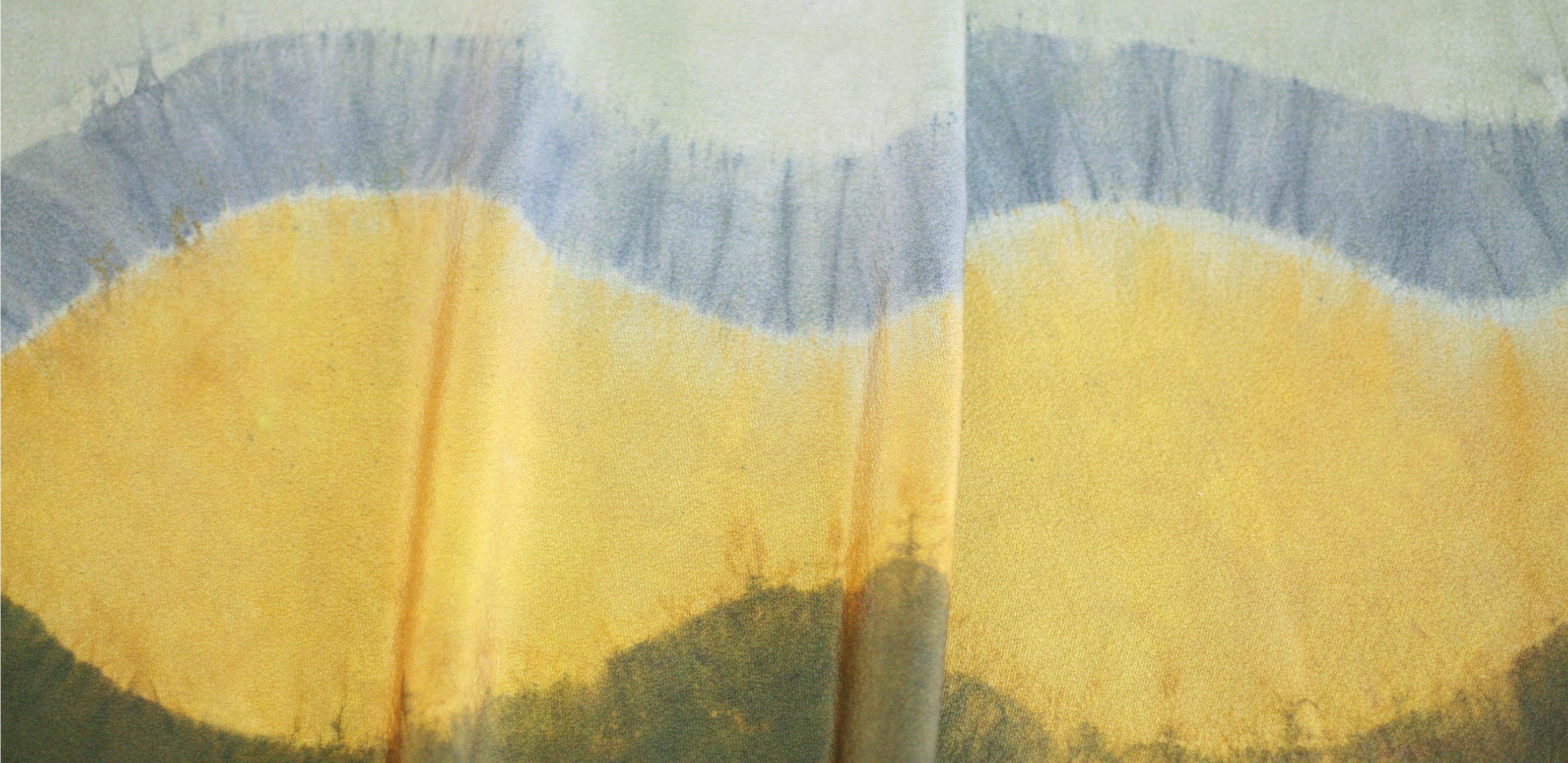
原始的な手法での草木染めは中国では紀元前3000年頃、ヨーロッパやインドでは紀元前2500年頃、そして日本では、縄文時代(紀元前1400年頃)から植物や貝紫などで染色が行われてきたと言われています。
薬を飲むことを「服用」と今でも言うように、昔の日本では、衣服を着るということは薬を飲むことと同じ意味があったと考えられます。天然の衣服を草花で染めることは、薬効成分を体に染み込ませるためにありました。衣服はただ着飾るためのものだけではなく、自分を守る大切なお守りだったのです。
草木染めにはその地域の風土や生活感、美意識などから影響を受けた様々な技法があります。
MORI WO ORUでは日本古来から伝わる草木染めの技法、板締め絞りや帽子絞りを使用し、その豊かで多彩な美の世界を表現します。
It is thought that natural dyeing by primitive methods using plants and shells has been carried out in China since 3000 B.C., around 2500 B.C. in Europe and India, and since the Jomon period (around 1400 B.C.) in Japan.
In Japanese the word fukuyou, which contains the Chinese character for ‘clothes’, means ‘to take medicine’. In ancient Japan, it was believed that wearing clothes was the same as taking medicine.
Dyeing organic clothing with plants was to suffuse the body with medicinal ingredients. Clothing was not just for dressing up, but was an important talisman to protect oneself.There are various kusaki-zome techniques influenced by the local climate, lifestyle, and aesthetic sense.
At Mori Wo Oru, we use itajime-shibori - sandwiching the fabric between wooden pieces before dyeing, and bōshi-shibori - sewing the fabric to create a gather and binding in a cylindrical shape before dying, Japanese techniques which have been handed down since ancient times, to express the rich and diverse beauty of the natural environment.
染め直し
Re-dyeing
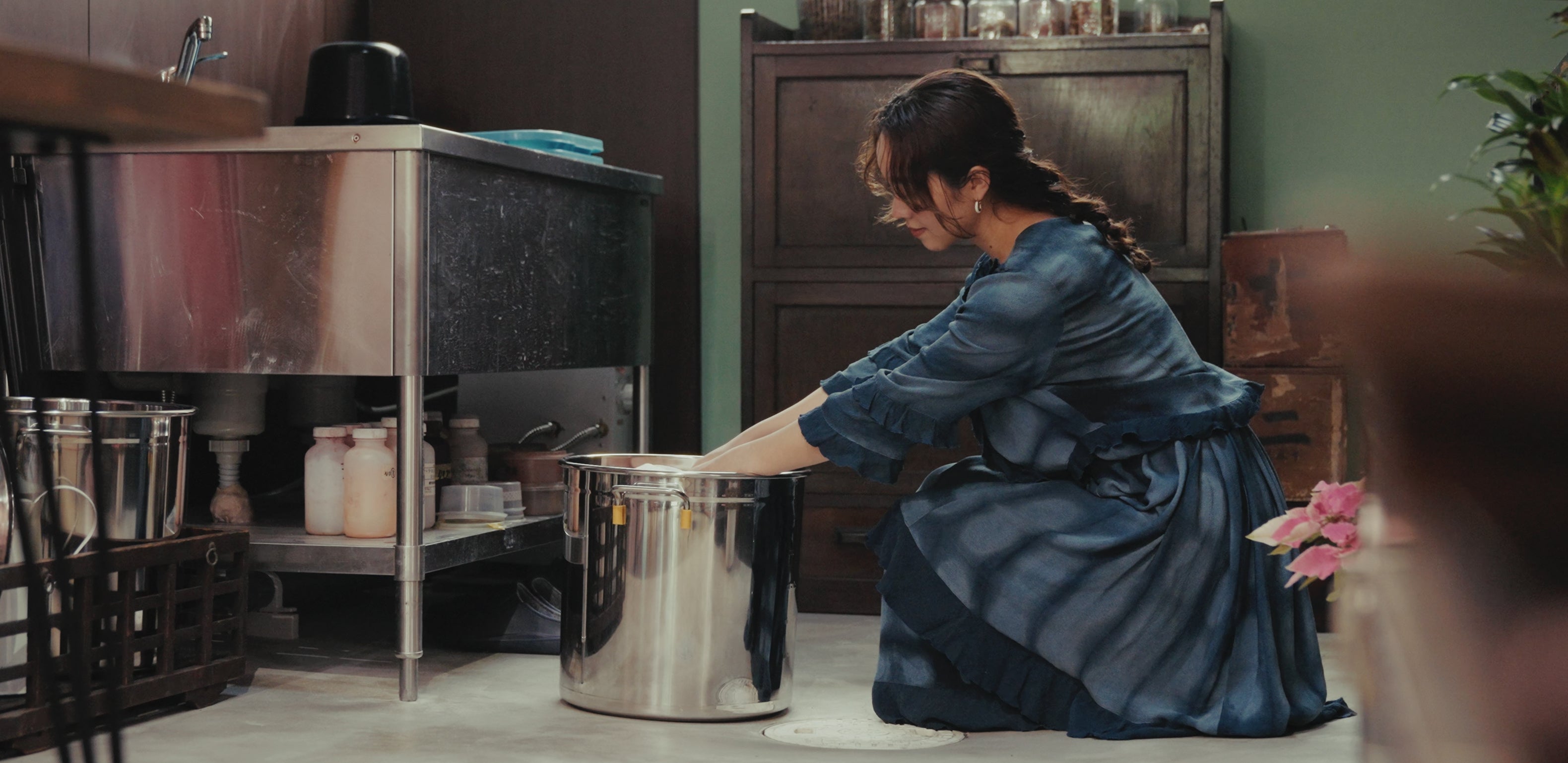
長く商品をご利用いただくために、MORI WO ORUでは染め直しをお受けしております。
昔は色が抜けた服は自分で染め直したり、専門の職人に依頼し、染め直しをすることが普通でした。色の組み合わせによっては全く新しいものに生まれ変わらせることも可能ですので、お気軽に染め直しをご依頼ください。
(ECで染め直しチケットをご購入いただくか、Design Studioに来ていただくと可能です。)
Working toward a culture that enjoys change.Natural colors are guaranteed to change. That’s simply nature.
Mori Wo Oru offers a re-dyeing service so that you can continue to enjoy our products for longer. In the past, it was common to extend the life of clothing by re-dyeing them either by yourself, or by hiring a professional after the colors had faded.
Depending on the combination of colors, it is possible to transform the clothing or textiles into something completely new. If you have something you’d like to have re-dyed, don’t hesitate to contact us.
(You can purchase a re-dyeing ticket on the online store or come to MORI WO ORU Design Studio.)
